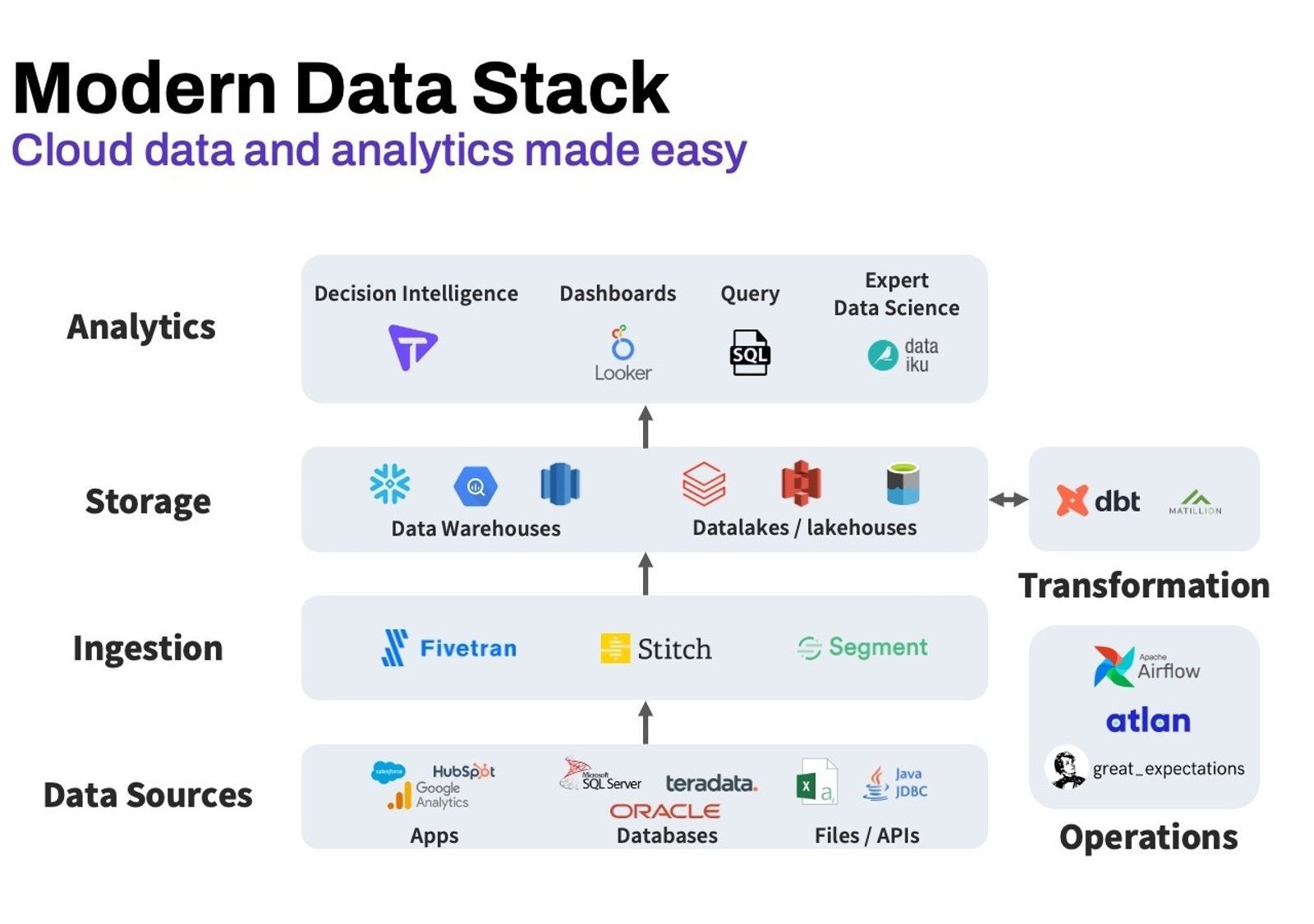
Easily combine multiple data sources for deeper insights

Easily combine multiple data sources for deeper insights
- It’s easy to analyze data early in a company’s lifetime. You can fit all the data on a spreadsheet, you’re looking at one source of data, and you’re doing simple counts. It doesn’t require much work to do basic reporting and calculate key metrics. And the tools you use, like product analytics tools, come with reporting features so you can do basic analysis.
- But as the company grows, you’ll have more complicated questions that can only be answered by combining multiple data sets. Without a modern data stack, it’s tedious to export data from different systems and then combine it in a spreadsheet every time you do analysis.
- A modern data stack automates this manual process. An ETL tool extracts data from your production database and third-party tools and centralizes it in a data warehouse. Your data lives in one place, making it easier to work with multiple data sources. Plus, when you’re not looking at your data in a silo, you’re able to find more powerful insights that’ll change the way you do business.
Prepare your data upstream for faster downstream analysis
When it comes to analysis, you actually spend most of your time curating data, documenting it, cleaning it, making tables accessible, and getting consensus on definitions. This is the main function of a modern data stack. It’s the key place where you orchestrate your data. A modern data stack allows you to clean your data, document it, and make it intuitive and accessible. It’s like prepping all the materials and laying the foundation for a house.
Doing all this work early on makes the analysis work that’s done downstream — not just by you, but also by the whole company — much faster.
Create a single source of truth for
everyone.
- A modern data stack helps you transform your data. You want to transform your data before analysis is done because you’ll solve a number of problems that you typically see downstream. One of these problems is inconsistent answers.
- Let’s say your company needs to report on the number of monthly active users (MAU) you have. The Operations and Product teams both pull this metric, but they arrive at different answers. This is because the Operations team considers anyone who has logged into their account within the past 30 days an active user. The Product team considers an active user as someone who has logged into their account within the past 30 days and taken a key action.
- Data transformation ensures everyone is pulling from the same data and everyone at the company will arrive at the same answer. For the example above, you could define the MAU metric upstream and create a field that all teams would pull from. By creating consistent definitions through data transformation, you’ll get consistent answers.
Automate reporting
- Having a modern data stack means you can automate reporting in a BI tool. Instead of pulling data and juggling spreadsheets every time you need updated metrics, you can automate your reports to refresh on a specified cadence and be emailed to individuals. A report that used to take someone three hours to build each month can now be updated in one click.